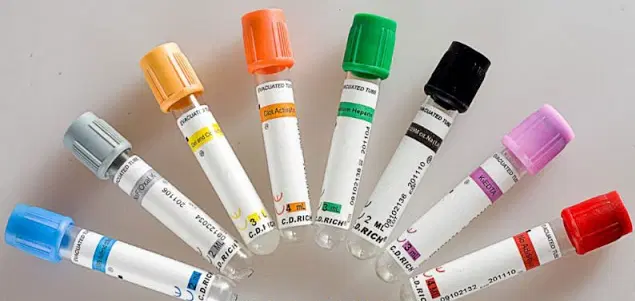Coagulation is the result of a coordinated interaction of blood proteins, circulating cells, cells of the vasculature and proteins of the extracellular matrix in the vessel wall. This complex mechanism makes it difficult to evaluate in the laboratory, which is limited only to measuring circulating coagulation proteins and circulating cells, while the vascular elements are not measurable.
Prothrombin time (PT) and activated partial thromboplastin time (aPTT) are the tests generally used as a screening test to evaluate most of the coagulation factors. The factors involved in the intrinsic pathway of coagulation are evaluated by the aPTT while the TP evaluates the extrinsic pathway, both coincide in the common pathway factors. To carry out both require blood anticoagulated with sodium citrate, which functions as a calcium chelator. It is very important to take into account that if the amount of anticoagulant is inappropriate can give very altered results, which confuse the clinician, because the amount of citrate interferes with the calcium used during the test. This error has been significantly reduced with the vacuum tubes with negative pressure currently available, since they are calibrated to extract the exact amount of blood to maintain the proper proportion with the anticoagulant. Another important aspect to take care of is the time elapsed between the extraction of the blood and the realization of the tests, since if more than 4 hours elapse some labile factors such as FV and VII are inactivated, giving prolonged times without necessarily reflecting the condition in I live from the patient.
Prothrombin time activates coagulation when tissue factor or thromboplastin and calcium are added; the normal result varies from 10 to 14 seconds with>60% activity. Depending on the type of thromboplastin that is added, the result can vary widely, which is why a standardized method has been developed to express these variations: international normalized ratio (INR). The importance of this parameter lies in its usefulness to evaluate the effectiveness of anticoagulation with vitamin K antagonists, but it has little use in other states of coagulopathy as in liver failure.
Activated partial thromboplastin time evaluates the intrinsic pathway of coagulation and the common pathway; the latter, together with the prothrombin time. For this reaction to the citrated plasma, phospholipids, calcium and a contact factor initiator are added, such as kaolin. The normal result ranges from 25 to 45 seconds; however, it is important to know the reference values of each laboratory. The most frequent cause of alteration of activated partial thromboplastin time is the deficiency of some of the factors of the intrinsic pathway, although this must be with an activity <40% to modify it; the highest incidence of deficit is that of factor VIII that corresponds to hemophilia A; Anticoagulants of the type of unfractionated heparin lengthen it; In patients receiving very high doses of heparin, the prothrombin time can also be prolonged.
On the other hand, when blood samples are taken through catheters that are heparinized even with very small amounts and after “washing” the catheter, we may have falsely prolonged activated partial thromboplastin time. The same happens with acquired endogenous anticoagulants, known as inhibitors, and the most frequent of these is the lupus anticoagulant. One way to differentiate them is by correcting with normal plasma, which is done with a volume of the patient’s plasma plus a normal plasma volume; if it corrects it is the effect of medications, if it does not correct it is an acquired inhibitor.
Thinking about the importance of the determination of coagulation times, Kalstein offers test tubes with sodium citrate the highest quality that will allow you to obtain more optimal results. That’s why we invite you to take a look at HERE


